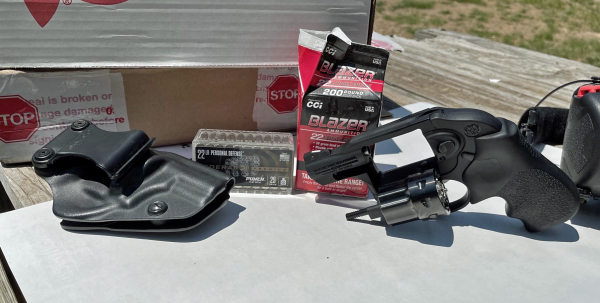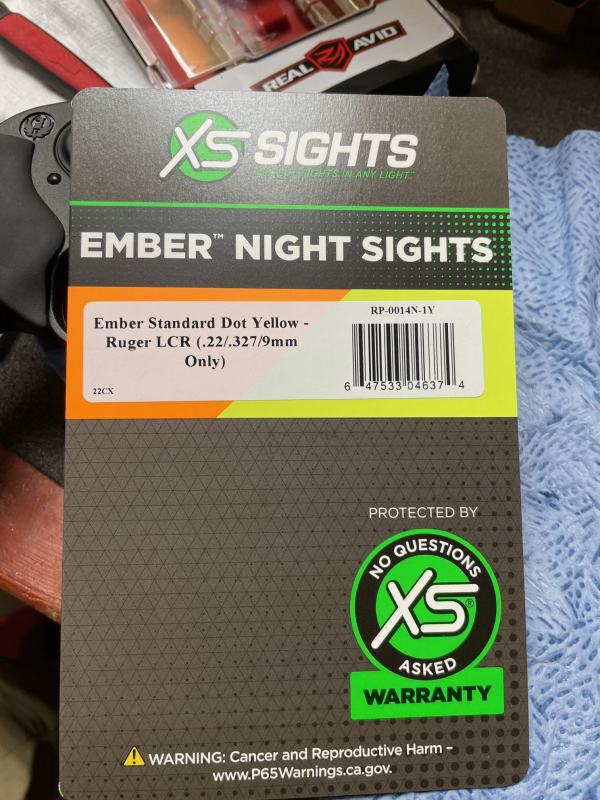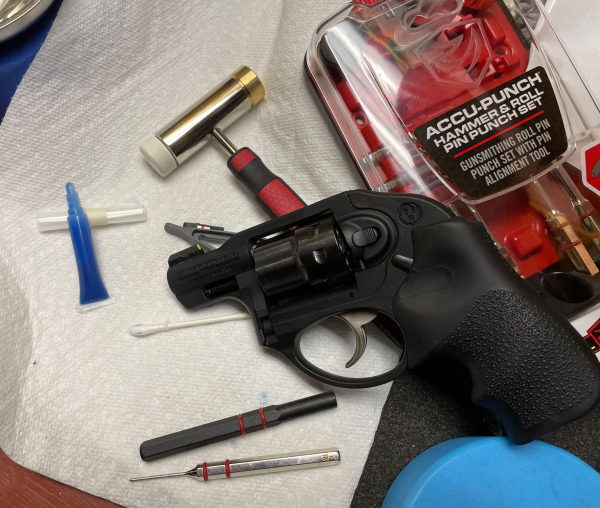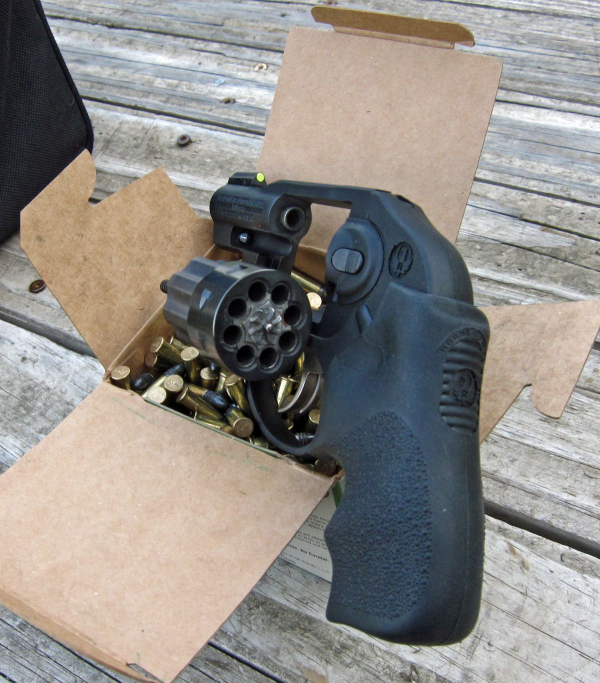There are three ways to look at the coordination of point of aim with point of impact. One is that if you shoot fast enough, people will be so impressed at your skill that they’ll simply give up. Another is “ah, you’ll be close and you can’t look at sights anyway, so don’t worry about it.” The last one – that I can think of – is that the gun has to hit at your point of aim with the ammo you carry or nothing else matters.
There’s something to the “up close, no sights” thing in a very general sense. Back when handguns tended to have miniscule sights, you were unable to use them quickly with precision or the lighting was such that you simply couldn’t see them at all. With the products available now, that excuse has gone the way of the dodo. As to the shooting fast thing, check out last week’s Tactical Wire feature which mentioned the speed at which one shoots operationally. That should clear it up.

Recently, I got a Ruger LCR (Lightweight Compact Revolver) chambered in 22 Long Rifle as a trainer, among other things. I had a minor issue with it which required a return to the factory. When it returned, it was functional, but I found it was striking about 9” low at 25 yards with some loads. I mentioned that here and was later called by a Ruger representative who was concerned that the wrong front sight had been installed at the factory.
I’d already checked into a sighting solution and found the LCR-22 Ember Sights from XS Sights. It’s a non-tritium front sight sized for the Ruger LCR in 22/327/9mm only. It’s low enough, tritium is out – it can’t be fitted to the sight.
My concern was more POA/POI, so I had already opted for this solution before the call from Ruger.
Time out: If you have a 22 LCR that’s shooting quite low, call their customer service instead of going after-market. Give the company a chance to sort it out. That said, regular LCR-22 users (Chuck Haggard, Darryl Bolke, Rhett Neumayer) haven’t seen the low point of impact problem with these guns in their experience.


The sight I’d selected uses a “proprietary photoluminescent Glow Dot that absorbs ambient light and glows in low light.” I’ve checked that and it seems to work. The company also recommends this for folks struggling with vision compromise attendant to aging among other things.
Before the “Big Dots aren’t accurate” crowd speaks up, I have to wonder how many are using electro-optic sights featuring a red dot … technology visually similar to the XS/express sight sighting system.
As to installation, I followed the supplied directions. Simply done, I used an armorer’s block, a 1/16th -inch punch and a hammer (I used the roll pin punch and hammer from Real Avid), cotton swabs, acetone, padded pliers and a dulled cutting implement.
With a cleared revolver, I put it on the armorer’s block, drove out the roll pin (it fell into the recess in the block) and removed the factory sight with padded pliers. I checked fit of the new sight (it was perfect), cleaned off the excess filler material and degreased all the parts with acetone.
When the parts were dry, I rechecked alignment of the retaining pin hole through sight and the barrel tenon. Removing the sight, I liberally applied the (XS-supplied) blue thread-lock adhesive to the tenon cut in the sight and along the bottom of the sight. The Real Avid roll pin punch set (the “Accu-Punch Hammer and Punch Set” for roll pins) includes a handy pin starter and a non-marring finishing punch, both of which I used.
The gun was allowed to set a few days before use, ensuring the gap-filling compound was truly set up. When I got the gun to the range, my object was to see if I was no longer hitting 9” low at 25 yards.
Using CCI Blazer 38-grain lead round-nose, I found I was tending high. Thinking it was like the more conventional XS express sights, I held the “ball out of the bucket,” with the front sight riding atop the frame on either side of the rear sight groove. Remembering a graphic sent along from Shootrite Guns with the Shootrite/Tiger McKee custom “Chopper 75,” I dropped the ball into the bucket (about half into the notch) and tried again. This was at fifteen yards.

This time I was using Remington’s bulk-packed Thunderbolt 40 gr. ammo. It hit point of aim/point of impact at fifteen yards. Moving up to seven yards changed nothing.
Back at 25 yards, I reverted to the express sight picture – “ball above the bucket, six o’clock hold on target.” The bullets struck at point of aim. Moving to fifty yards, I scattered rounds all around the silhouette – an FBI “Q” target with a B-8 (CP) repair center over the “high thoracic.” Two struck into the 8-ring of the B-8, with a pair in the “7” ring, one nicking the repair center. One was in the “neck” of the Q-bottle. Another went past the neck on the right and one was left outside the bottle. The eighth was below the bottle just a 6 o’clock.
That shows the old shooter needs to practice.
Back at 7 yards, with the appropriate ‘low sight picture,’ the hits were under the top of the front sight within the ‘ball.’ I was shooting in the manner known as ‘target focus,’ looking at the target through the front sight, like shooting a red dot optic. A drill I did included a string of one pair fired strong hand supported with another fired weak hand supported, followed up with the three-round failure drill. As I was shooting on the same marked and taped target, I noted the rounds stayed inside the B-8 repair center’s “9” ring on the center shots.
I’m thinking this sight was the right move for this gun. I’ll keep working at it and keep you posted.
-- Rich Grassi